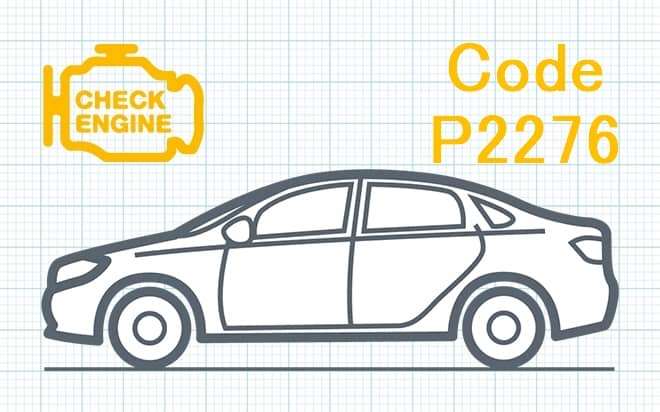
P2276 O2 Sensor Signal Stuck Bank 2 Sensor 3
Content
P2276 O2 Sensor Signal Stuck Bank 2 Sensor 3
OBD-II DTC Datasheet
O2 Sensor Signal Stuck Bank 2 Sensor 3
What does this mean?
This is a generic transmission code, which means it applies to all makes / models from 1996 onwards. Car brands may include, but are not limited to, Ford, Mazda, Jaguar, Jeep, Land Rover, etc. However, specific troubleshooting steps may differ from vehicle to vehicle.
This DTC P2276 applies to the post-catalytic converter O2 (oxygen) sensor on block # 1, sensor # 3. This post-cat sensor is used to monitor the efficiency of the catalytic converter. The converter's job is to reduce exhaust emissions. This DTC sets when the PCM detects the signal from the O2 sensor as stuck lean or misaligned lean.
DTC P2276 refers to the second downstream sensor (after the second catalytic converter), sensor #3 on bank #2. Bank #2 is the side of the engine that does not have cylinder #1.
This code basically tells you that the signal emitted by a specific oxygen sensor is stuck in a lean mixture (which means there is too much air in the exhaust).
symptoms
Chances are you won't notice any handling issues as this is not sensor # 1. You will notice that the Malfunction Indicator Light (MIL) comes on. However, in some cases, the engine may run intermittently.
Possible reasons
Reasons for this DTC may include:
- Exhaust gas leak near O2 sensor
- Dirty or defective HO2S2 sensor (sensor 3)
- HO2S2 Wiring / Circuit Problem
- Free installation of the HO2S2 sensor
- Incorrect fuel pressure
- Defective fuel injector
- Leaking engine coolant
- Defective purge solenoid valve
- PCM out of order
Diagnostic and repair procedures
Visually inspect wiring and connectors for corrosion, scuffed / abraded / kinked wires, bent / loose wire pins, burnt and / or crossed wires. Repair or replace as needed. It would be nice to visually check the wiring of all sensors.
Check for exhaust leaks and repair if necessary.
Using a digital voltmeter (DVOM) set to ohms, test the harness connector (s) for resistance. Compare with manufacturer specifications. Replace or repair as necessary.
If you have access to the advanced scan tool, use it to monitor the sensor reading as seen by the PCM (engine running at normal operating temperature in closed loop mode). Observe bank 2 sensor 3 readings. The rear heated oxygen sensor (HO2S) usually sees voltage fluctuations between 0 and 1 volt, for this DTC you will probably see the voltage "stuck" at 0 V. Rotation of the engine should cause a change (response) sensor voltage.
The most common fixes for this DTC are an exhaust air leak, a problem with the sensor / wiring wiring, or the sensor itself. If you are replacing your O2 sensor, buy an OEM (brand name) sensor for best results.
If you are removing the HO2S, check for contamination from fuel, engine oil, and coolant.
Other troubleshooting ideas: Use a fuel pressure tester, check the fuel pressure at the Schrader valve on the fuel rail. Compare with manufacturer's specification. Inspect the purge solenoid valve. Inspect the fuel injectors. Inspect the coolant passages for leaks.
There may be technical service bulletins (TSBs) specific to your make and model and referring to this DTC, contact your dealership's service department or online source to find any specific TSBs that apply to your vehicle.
Related DTC discussions
- 02 sensor required 265 miles Jaguar test drive P2276-00Hello, I have a 2016 Jaguar F-Type R. I took it to the dealer to check the engine light, new tires, front alignment, and fan noise. The 02 code was P2276-00. They replaced it and did a two-day test drive (2 states). I have read the verification procedure here. It looks like 2 minutes ...
Need more help with your p2276 code?
If you still need help with DTC P2276, post a question in the comments below this article.
NOTE. This information is provided for informational purposes only. It is not intended to be used as a repair recommendation and we are not responsible for any action you take on any vehicle. All information on this site is protected by copyright.
